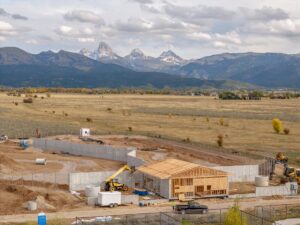The relationship between zoos and the local communities they serve is a complex one that has changed and evolved drastically in the past few decades. With a more intent focus on conservation, rehabilitation, and education, zoos across the world have grown in their missions to better serve animals, extending this mission to include stewarding members of the community to play a crucial role in protecting fragile ecosystems and animal life. Zoos must also consider the diversity of the surrounding communities and work towards an inclusive and equitable gathering place for all. Conscious zoo design that prioritizes conservation, sustainability, animal wellness, and education can encourage visitors to feel a sense of responsibility in the continued wellbeing of the animals they see in the exhibits.
Fostering the connection between members of the community and a zoo’s mission of conservation and animal wellness begins with deliberate design choices. In order to create a sense of place and connection between zoo visitors and exotic animals from natural habitats thousands of miles away, we must focus on giving agency to community members in feeling like they can make real change for the animals they love by providing equitable access and open opportunities to contribute. We must also balance this visitor experience equally with the importance of the animal experience and wellbeing, ensuring that the safety and care of inhabitants of these exhibits is paramount. One of the most effective ways to do this is through visitor and community education.
This can look different between exhibits depending on visitor and animal needs, however, general design choices that can make a significant difference are:
- Designing space for keepers or zoo volunteers to directly speak to and interact with visitors
- Creating enclosures that allow visitors to feel like they are experiencing the animal in its natural habitat
- Designing accessible and readable signage across all animal exhibits to educate visitors on information about the animals and their habitats
- Offering enriching environments for animals in order to encourage natural behaviors
- Creating designated spaces within the zoo for classes, workshops, demonstrations, or any variations of collaborative, group educational efforts
- Offering signage and materials that educate visitors on ways they can protect animals and encourage conservation through caring for the environment and making more sustainable choices
We can also work to create connections between zoos and communities beyond the boundaries of the animal exhibits.
The Association of Zoos & Aquariums (AZA) has dedicated their mission to ensuring that all zoos and aquariums that gain their accreditation not only best serve the animals inhabiting them, but also work to include and uplift their surrounding communities with programs like Citizen Science and dozens of field conservation efforts. EGI has worked diligently to ensure we are designing our zoo projects to AZA’s high standards, innovating the process at the intersection of animal wellness and building efficiency and sustainability.
Zoo Atlanta recently designed an innovative historic transformation of its Savanna Hall, a LEED Gold certified space, that worked hand-in-hand with the construction of the Grant Park Gateway parking deck and greenspace to increase accessibility and community involvement in Atlanta. At the Oklahoma City Zoo, EGI created a conscious design that not only protects and improves the wellness of the Galapagos Tortoises, but also involves a tangible piece of the community for visitors to connect to, with an exhibit boundary rail that is to be welded from donated drilling pipe from a local oil company.
Through the construction of the new grizzly bear exhibit at Nebraska’s Riverside Discovery Center, conscious design in collaboration with the local community’s conservation efforts saved two orphaned bear cubs from a local national park, where their mother had been illegally hunted and killed. The finished design of a future addition will also include an array of classroom teaching laboratory and events spaces, furthering the community connection that remains integral to education efforts.
EGI is thrilled to continue to work in the space of sustainable and conscious zoo design with exciting upcoming projects. Conscious zoo design and sustainability in the built environment share a common goal of creating a better, brighter future for all communities of living things that inhabit our beautiful and diverse planet.




